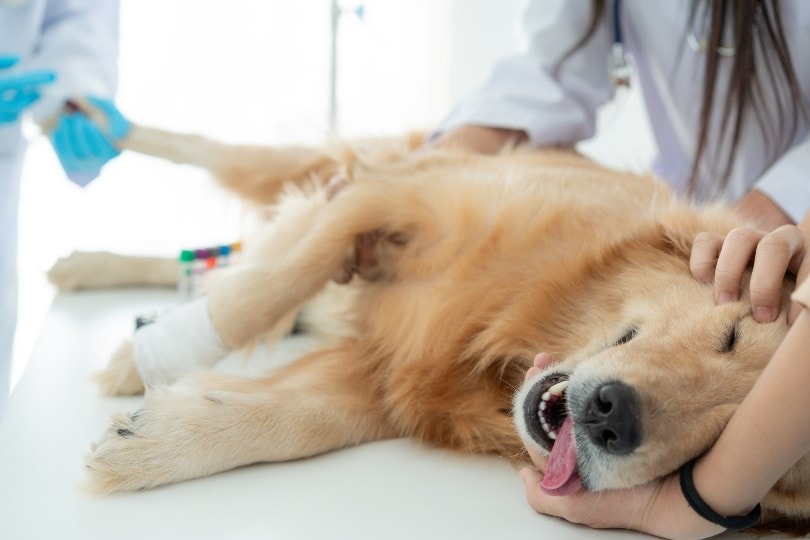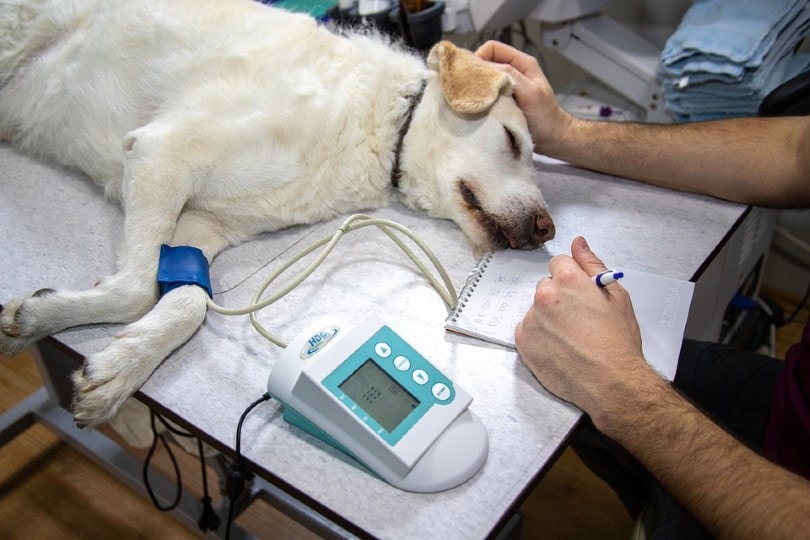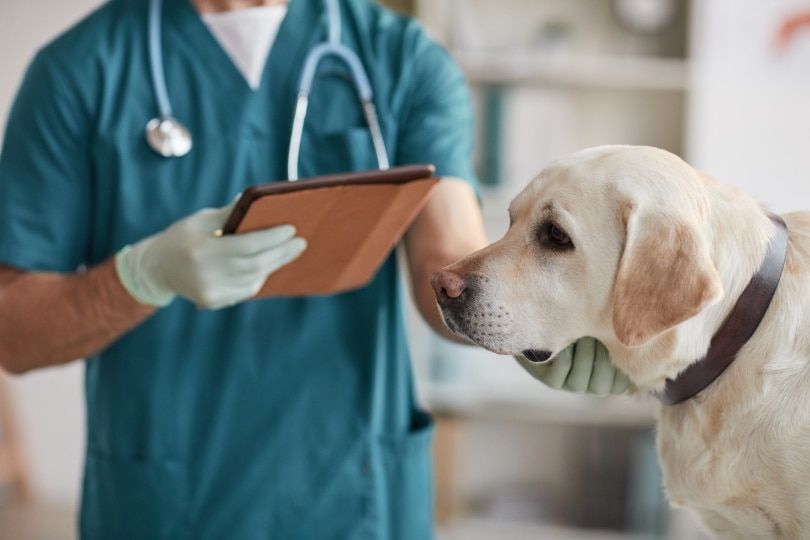Click to Skip Ahead
A patellar luxation, also known as a luxating patella, occurs when a dog’s kneecap moves out from the position it should normally be to the inside or outside of the groove it should sit in. This is actually an orthopedic problem that’s fairly common in the canine world. In fact, it’s a common genetic problem with many dogs, some of them being diagnosed as puppies, and it seems to happen more often in smaller breeds. Patellar luxation surgery can cost anywhere between $1,000 and $5,000 per affected knee1.
If your dog has this problem and you’re looking at surgery for them, you probably have a whole lot of questions you want to be answered. Is the patellar luxation painful? What’s the recovery like?
We’ll try to answer some of your questions in the article below.
How Much Does Dog Patellar Luxation Surgery Cost?

If you already know your dog has a patellar luxation, then you’ve probably talked to a vet and are now wondering how much it’s going to cost you to put your little guy through surgery. The cost of this surgery will depend on quite a few factors, including where you live, the size of your dog, the degree of the luxation, additional problems, the type of surgery needed, and who does the surgery. Your veterinary surgeon will be able to provide you with a detailed estimate of the cost, so contact them for this information.
Unfortunately, half of the dogs with patellar luxation on one side also have it on the other side. However, that’s not where the costs stop with this type of disorder and recovery for your pet. Postoperative care can be quite an investment, too.
It may include physiotherapy, medication, hydrotherapy, and, of course, office visits for checkups. According to the vet and the rehabilitation center you choose, the rehabilitation alone can run anywhere from $40 to $100 per session. In addition, the medications will run you anywhere from $20 to $50 a month to relieve your dog’s pain as they recover, so this surgery and recovery can be expensive. These are guidelines only and, again, will depend on many factors, so ask your vet for an estimate of ongoing costs. However, this initial investment in your dog’s orthopedic health can reduce uncomfortable arthritis and the risk of other injuries as time goes on.
Your best bet is to invest in high-quality pet insurance for your dogs when you first get them, just in case the unthinkable happens. It is important to note that most insurance companies will not cover what they term a pre-existing condition. So, you can’t usually take out insurance for this problem after they have been diagnosed with it or started showing signs.
What Is the Recovery and Prognosis for Patellar Luxation Surgery in Dogs?
It is said that over 90% of dog owners are extremely happy with their dog’s recovery time after the surgery is completed. Most pets go on to live active, normal lives after the surgery, too. However, since the patellar luxation is judged by grades one through five, those with a higher-grade luxation and other abnormalities such as hip dysplasia and cranial cruciate ligament disease may not recover as well.
If cared for properly, most dogs can start using the leg again within six to eight weeks. However, it’s best to follow the post operative advice from the surgeon who did your dog’s patellar luxation surgery for the best results.

How to Prevent Patellar Luxation in Dogs
Patellar luxation is usually a developmental or genetic condition, so the only way to completely prevent it from happening to your dog is not to breed dogs that carry the gene that predisposes them and their puppies to this disorder. Dogs with grade one and sometimes two, luxations can usually be cared for in the following ways outlined below. Dogs with higher grade luxations and showing signs of difficulty such as pain and limping would do better to have surgery.
If you already have a dog with a luxating patella or two, following these tips should help.
Don’t Let Your Pup Become Overweight
Overweight dogs who have vulnerable knees are more prone to hurt those knees because of their weight. So keep your puppy from becoming overweight for the best results.
Regular Exercise
Make sure your pup gets regular controlled exercise to prevent them from becoming overweight. This will also help to strengthen their knees too. You can seek advice from a veterinary physiotherapist for an exercise program.
To talk to a vet online now, click on the image or button below:
A Healthy Diet
Feed your pooch a healthy, balanced, and complete diet with plenty of the ingredients they need to strengthen their joints and reduce inflammation, such as glucosamine, chondroitin, and omega fatty acids.
Final Thoughts
While patella luxation surgery and recovery costs for your dog can be quite expensive, this reflects the level of skill and involvement required to successfully treat the problem. Having good pet insurance in place when you first get your pet and continuing with this should mean they will help cover the costs. In most cases, dogs make a full recovery if their post-operative care is careful and you attend their re-check appointments so the vet can monitor their progress.
Related Reads:
Featured Image Credit: SeventyFour, Shutterstock












